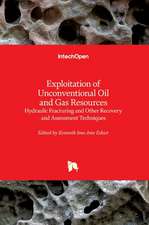Electrochemical Power Sources: Fundamentals, Systems, and Applications: Li-Battery Safety
Editat de Jürgen Garche, Klaus Brandten Limba Engleză Hardback – 20 sep 2018
The manufacturers of cells and batteries have strongly reduced the hazard probability by a number of measures. However, absolute safety of the Li system is not given as multiple incidents in consumer electronics have shown.
- Presents the relationship between chemical and structure material properties and cell safety
- Relates cell and battery design to safety as well as system operation parameters to safety
- Outlines the influences of abuses on safety and the relationship to battery testing
- Explores the limitations for transport and storage of cells and batteries
- Includes recycling, disposal and second use of lithium ion batteries
Preț: 972.56 lei
Preț vechi: 1265.01 lei
-23% Nou
Puncte Express: 1459
Preț estimativ în valută:
186.10€ • 193.92$ • 154.09£
186.10€ • 193.92$ • 154.09£
Carte tipărită la comandă
Livrare economică 27 martie-10 aprilie
Livrare express 26 februarie-04 martie pentru 127.74 lei
Preluare comenzi: 021 569.72.76
Specificații
ISBN-13: 9780444637772
ISBN-10: 044463777X
Pagini: 670
Dimensiuni: 191 x 235 x 39 mm
Greutate: 1.35 kg
Editura: ELSEVIER SCIENCE
ISBN-10: 044463777X
Pagini: 670
Dimensiuni: 191 x 235 x 39 mm
Greutate: 1.35 kg
Editura: ELSEVIER SCIENCE
Public țintă
Primary audience is electrochemists, chemists, and chemical engineers, material scientists, electrical and mechanical engineers involved in all phases of the life of a battery (research, development, production, transport, use, and disposal). It could also be useful to electrical, mechanical and safety engineers, transportation dispatchers, architects as well as car manufacturers, fleet operators, park house operators, tunnel operators, car wash operators, car service stations. The book supports university instructors as they prepare general lectures about batteries by providing specialized knowledge and insights about battery safety.Cuprins
1. General Battery Safety Considerations
2. General Overview of Non-Lithium Battery Systems and their Safety Issues
3. Overview of Rechargeable Lithium Battery Systems
4. Safety Aspects of Lithium Primary Batteries
5. Safety of Secondary-Lithium Batteries: An Introduction
6. General Overview of Li-Secondary Battery Safety Issues
7. Lithium-Secondary Cell: Sources of Risks and Their Effects
8. Managing Safety Risk by Manufacturers
9. Managing of Risks by Users and Stakeholders
10. Safety Tests for Li-Secondary Batteries
11. Li-Secondary Battery: Special Risks
12. Li-Secondary Battery: Damage Control
2. General Overview of Non-Lithium Battery Systems and their Safety Issues
3. Overview of Rechargeable Lithium Battery Systems
4. Safety Aspects of Lithium Primary Batteries
5. Safety of Secondary-Lithium Batteries: An Introduction
6. General Overview of Li-Secondary Battery Safety Issues
7. Lithium-Secondary Cell: Sources of Risks and Their Effects
8. Managing Safety Risk by Manufacturers
9. Managing of Risks by Users and Stakeholders
10. Safety Tests for Li-Secondary Batteries
11. Li-Secondary Battery: Special Risks
12. Li-Secondary Battery: Damage Control



















